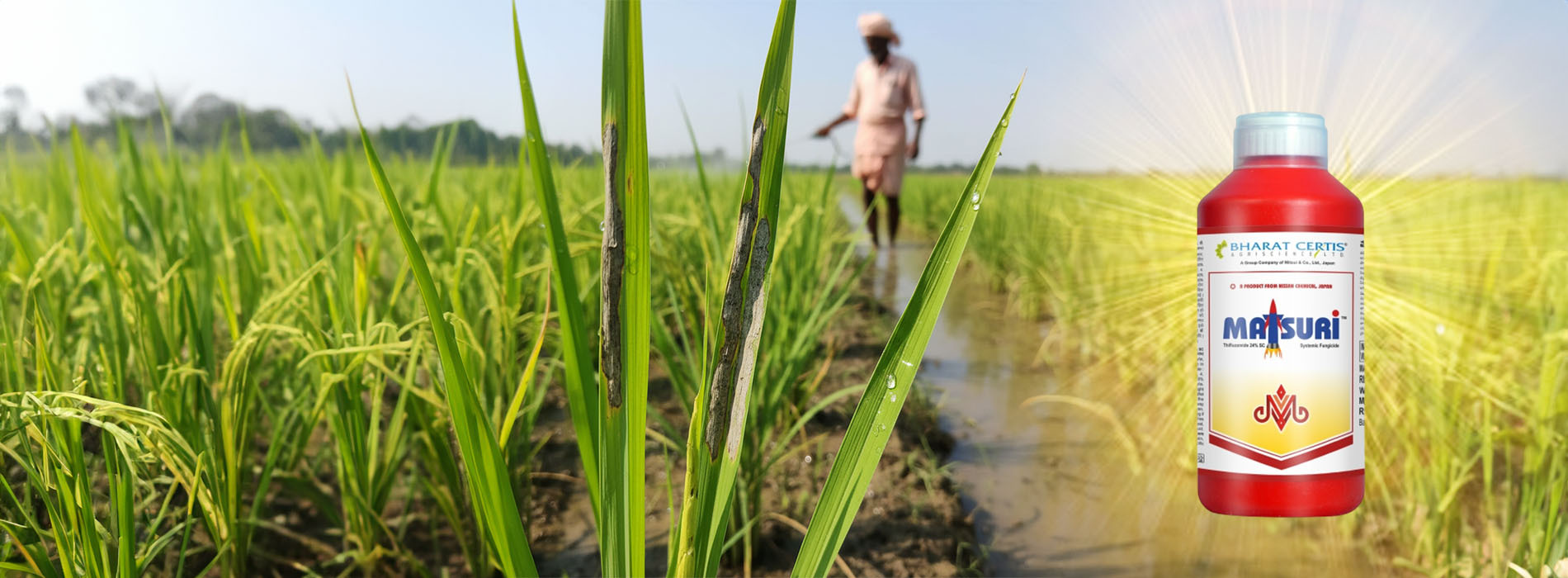
How to Control Sheath Blight in Rice for a Better Harvest
14th October 2025
Rice is a staple crop for millions of farmers, and a healthy crop is the key to a good harvest. Diseases like sheath blight can severely affect rice plants, reducing both quality and quantity. Using Matsuri helps farmers protect their rice farming and rice growing efforts effectively.
What is Sheath Blight?
Sheath blight is a fungal disease caused by Rhizoctonia solani. It attacks the leaf sheaths of rice plants, sometimes affecting young tillers, causing premature drying. If it develops during flowering, grain filling suffers, reducing harvests. Dense canopies and high humidity accelerate the spread. Applying Matsuri at the right stage can help manage this disease effectively.
How to Identify Sheath Blight
Early detection is key. Watch for:
- Oval greenish-gray lesions, 1–3 cm long, on leaf sheaths.
- Floating sclerotia near buds.
- Surface infections spreading upward on leaf sheaths.
Why Sheath Blight Reduces Harvest
Infected leaves reduce photosynthesis, energy for grain filling decreases, young tillers may die, and flowering is disrupted. Yield losses affect both farmers’ income and crop quality. Timely use of Matsuri protects agriculture in rice.
How to Control Sheath Blight in Rice
Combine cultural practices with fungicide use: proper plant spacing, balanced fertilization, and water management. Resistant rice varieties help. When symptoms appear, a systemic fungicide like Matsuri ensures effective control.

Matsuri – A Reliable Solution
Matsuri is systemic and works preventively and curatively. It moves through the plant, strengthening stems, preventing lodging, and protecting leaf sheaths. Key benefits include:
- Controls sheath blight before and after symptoms.
- Improves stem strength and plant health.
- Protects yield and ensures better grain quality.
- Safe to use with other fungicides or insecticides.
Application Tips for Matsuri
Apply according to recommended dosage for your rice variety. Ensure thorough coverage and combine with proper field management. Regular monitoring and timely application maximize protection for tomato plants, tomato seeds, and seed potatoes in intercropping or other crop rotations.
Conclusion
Sheath blight threatens rice farming yields. Early detection, field management, and using systemic fungicides like Matsuri protect crops and ensure higher productivity. Secure your harvest, maintain crop health, and maximize results by including Matsuri in your rice-growing strategy.